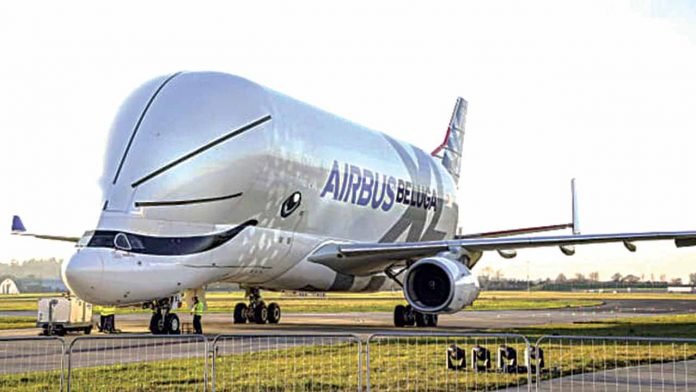The much anticipated plane, the Airbus Beluga XL has commenced full-time service, as it made its first operational flight on January 9, 2020.
Beluga XL, – the first of six – will be one of the biggest beasts in the skies, Its entry into full time service coincides with a time when jumbo passenger airliners such as the Airbus A380 and Boeing 747 are on their way out.
Though passengers won’t be able to travel in it, but the Beluga will play a crucial part of the construction of many of the commercial passenger planes we’ll all be flying on over the decades to come. The super-transporter cargo plane is designed by Airbus to fly its aircraft components between production sites in Europe and its final assembly lines in Toulouse, France; Hamburg, Germany; and Tianjin, China.
The Beluga XL is the successor to the Beluga, or Airbus A300-600ST, which has been in operation since 1995.Its design was adapted from an A330 airliner, with Airbus engineers lowering the flight deck and grafting a huge cargo bay onto the fuselage to create its distinctive shape.
The plane’s distinctive bulbous shape has earned it the nickname “the flying whale.” That’s because of its strong resemblance to the white-colored Arctic-dwelling mammal, the beluga.The XL’s twinkly-eyed, smiling-faced livery capitalises on this. The whimsical design was chosen by Airbus staff following a poll in which 20,000 employees were given six options and asked to choose their favorite. With 40 percent of the vote, it was the clear winner.
So how does one go about steering a machine like this through the skies? Well, says George, despite the plane’s unusual appearance, “for the pilots this is really an A330. Our pilots will be trained on the A330 and then they will get a Delta qualification to enable them to fly the Beluga XL.”
While you might think the aircraft would run slower, “the drag is about the same,” says George. “What changes really is the behavior of the aircraft at the rear, at the bottom of the cargo bay.“This is why we have lifted the vertical tail plane by more than two metres to get it out of the flow behind the cargo bay and we have also the special acceleration on the horizontal tail plane to give stability to the aircraft.”The Beluga XL is powered by two Rolls-Royce Trent 700 engines, which, as with its wings, are also used on the A330.
![]()










